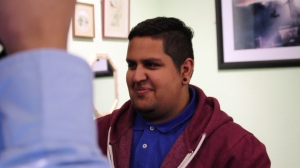Film
Film is an integral part of what makes us who we are today. Through documenting the past and the discoveries individuals had the ability to develop their knowledge to that beyond anyone’s imagination.
Looking through the contemporary scenario of today’s world I can acknowledge how influential this medium is. Through simple gestures and actions, the idea of creating videos has become part of what makes our global society. From adverts, to Facebook links, YouTube hits and television propaganda, media stands as one important tool that feeds the global society with signs and symbols of our identity.
Basic Key words for film
‘Aerial shoot’ – Being the shoot taken from a height, or high altitude manner
‘Black Lightning’– Using the camera and the foreground subject as a silhouette for the background.
‘Camera Angle’– The manner upon which the camera is directing itself to the view that it is capturing
‘Cut’– Is the distinction between one scene to the next
‘Cross cutting’– Is when you have connection with one action to the next shoot
‘Jump cut’– Is when the shoots placed after each other have nothing to do with each other.
‘Deep focus’– When you have both foreground and background in focus
‘Dissolve’– The smooth transition from one scene to another
‘Dolly’– Is a tripod like hand that can be used to further give extension to the desired shoot
‘Eye line matching’
-“A term used to point to the continuity editing practice ensuring the logic of the look or gaze. In other words, eye line matching is based on the belief in mainstream cinema that when a character looks into off-screen space the spectator expects to see what he or she is looking at. Thus there will be a cut to show what is being looked at:
object
view
another character
Eyeline then refers to the trajectory of the looking eye.”(Springhurst.org, n.d.)
‘Fade in’ – The transition into a scene
‘Fade out’– Transition out of the scene
‘Fill Light’– Is the key light used to eliminate hard shadows, and bring out the soft light of a scene
‘Follow Shoot’– The following of a shoot similar to a zoom in
‘Focus’– Is the sharpness adjusted for a shoot
‘Key light –
“The main light on a subject. Usually placed at a 45 degree angle to the camera-subject axis. In high key lighting, the key light provides all or most of the light in the scene. In low key lighting, the key light provides much less of the total illumination.”(Springhurst.org, n.d.)
‘Shot’– Is the distance from the camera to the subject in front of the camera. There different distances that one can find in film.
- Extreme close up- When you face the camera close to the subject and intruding within the comfort zone of the persona. It is the utmost revealing approach one can get.
- Close up- Is when the camera is placed in a manner that is close enough to the subject.
- Medium Close up- Is from the top of the shoulders to the head shot.
- Medium Shot- Is when you catch the persona from knee up within an environment, and you grasp the relation between the two of them.
- Long shot- Is an objective shoot upon which the persona is fully presented within an environment that surrounds him in.
‘Subjective camera behaviour’ – Usually maintained with -High and Low Angle view of the character.-The wide view angle that the character is able to observe in called ‘Panning Shot.-‘Tracking shot’ suggesting movement in the camera
Some Shot Trails – More to come soon
Bibliography
Springhurst.org, (n.d.). Basic Glossary of Film Terms. [online] Available at: http://www.springhurst.org/cinemagic/glossary_terms.htm#Aerial Shot [Accessed 9 Oct. 2014].


